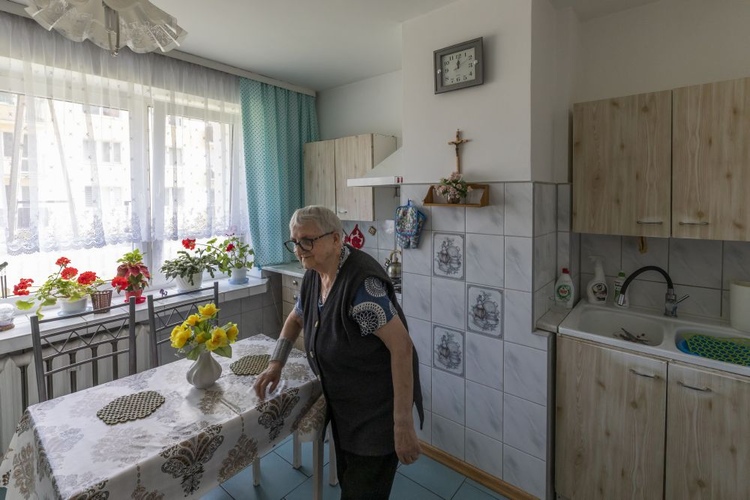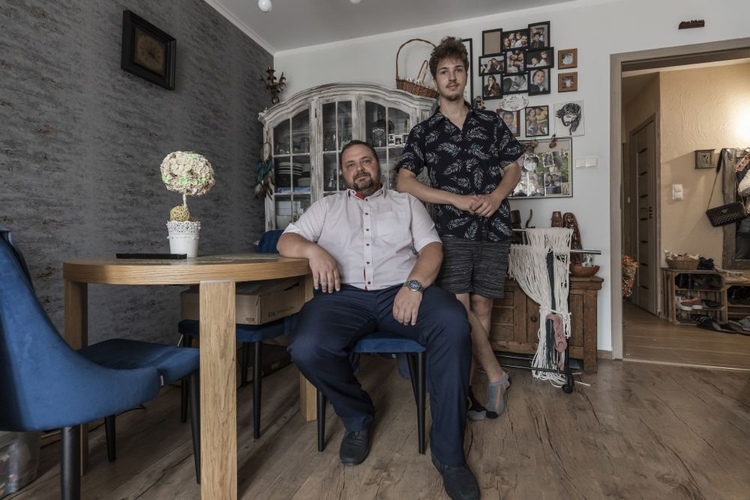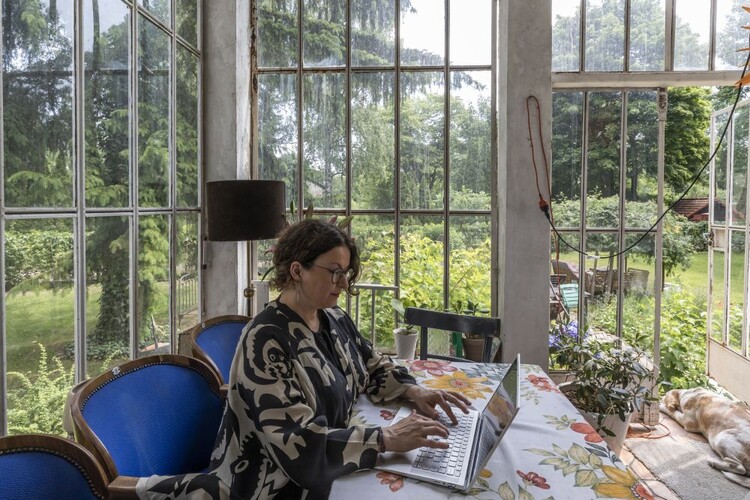
The cost of living crisis and war in Ukraine have accelerated Poland’s transition to green energy
By Anna Pozzi
Not long after Russia invaded Ukraine, triggering an energy crisis that reverberated around the world, the residents of towns and villages across Poland began to feel the financial impact. ‘At the end of 2021, the price for coal started to rise,’ says Wojciech Sienkiewicz, the 45-year-old president of the Budowlani housing association, a complex of 100 buildings in Bartoszyce, near Kaliningrad. ‘Energy bills rose by 330 per cent.’
In Poland, around 50 per cent of all individually-heated buildings get their heat from burning coal. The country is the ninth largest coal producer in the world – the second largest in Europe after Germany – but, today, most of its domestic coal fuels its 42 power plants. The high-quality coal needed for household boilers and stoves is largely imported, and much of it comes from Russia.
Poland’s path towards decarbonisation first started to take shape in the 2010s, at a time when coal was still a cheap source of heating and state subsidies for renewables hardly existed. More than eight million Poles are estimated to live in the 200,000 Communist-era apartment buildings, called wielka płyta, that can be found across the country. Built in the 1970s and 1980s from prefabricated concrete slabs, many of these buildings are now showing signs age. In 2022, the Polish government admitted that 70 per cent of Polish homes do not currently meet energy efficiency standards.

At 12 Śląska Street, a prefab building in Szczytno in the northeast, the residents’ housing association had been looking for ways to improve living conditions for the building’s mostly elderly and low-income occupants and lower its heating costs. In 2014, energy company Addur drilled 24 boreholes into the ground around the building, collecting natural heat from the ground that could be transferred to the building’s heating system, and placed solar panels on the roof to power a heat pump system.
A year later, the residents of 12 Śląska Street were finally disconnected from the coal-fired power plant. In 2017, after additional solar panels were installed on the roof, the gas stoves that had, until then, been used to heat domestic water were thrown away. Finally, the building’s original, tiny balconies were demolished and replaced with larger ones, fitted with new solar panels. Today, the building produces all the heat and electricity it needs, without the fear of future increases in household bills.
In 2021, Addur retrofitted another four buildings with heat pumps – this time in the ‘Ceramik’ complex in Ceglowo, a village 15 kilometres from Olsztyn. ‘Now in winter the flats are warmer and everything is easier, but above all the air is cleaner,’ says Bozena Wasiak, who has lived in the complex for 40 years. ‘The will to renovate the buildings was already apparent in 2018, but the work didn’t begin until 2020 and it took a year to complete’, says Adam Ruszczyk, a mathematics teacher and the president of the local housing association. ‘Everyone has really supported the project and, last winter, the 76 families who live here were not affected by the increase in energy prices caused by the Ukraine war.’

When the conflict in Ukraine erupted, and energy costs began to soar, Budowlani housing association’s president Sienkiewicz started looking for solutions. He discussed options with Polish heating equipment supplier Euros Energy, which proposed a large-scale retrofit project to install heat pumps and solar panels on each of the 100 buildings in the complex. The decision wasn’t easy, says Sienkiewicz. ‘The people who live here are rather old, and their financial situations aren’t great. We had to spend a lot of time explaining to them that it was a good solution, that bank loans were available and about half of the cost of the installation was subsidized, so the total cost would not be higher, but lower.”
Currently, work is being carried out in two multi-family buildings, which will be ready this winter, and work on another four buildings has already been approved. ‘Half the residents haven’t exactly understood what’s going on, so they are waiting to see what happens,’ says Sienkiewicz. ‘I also want to test it personally, but I’m sure it will be good. By creating our own renewable energy source, we are independent and no longer subject to external influences, such as political or financial situations.’

In the historic cottage where she lives in Milanówek, a village half an hour’s drive from Warsaw, Joanna Maćkowiak Pandera has got rid of her gas cooker and kitchen to make way for heat pumps and solar panels. Pandera has worked in the energy and climate sphere for 15 years (she has also been Deputy Minister for the Environment and head of the cabinet). Today she is the CEO of Forum Energii, a think tank that advises decision-makers on how to make the energy transition happen. ‘I felt that I needed to set a good example,’ she says. ‘Many people are still wary of electrification – using induction hobs for cooking, for example – and I wanted to experience it myself to know exactly what I was talking about.’
Pandera acknowledges a growing interest in electrification at least three or four years before the invasion of Ukraine, ‘but the war has certainly contributed to accelerating this process. Last year, almost 200,000 heat pump devices were sold in Poland, a year-on-year growth of 120 per cent.’ Currently, one in three heating systems installed in the country is a heat pump, and the figure is two in three for new houses. ‘There is still a lot of fear that paying €7,000-8,000 for a heat pump will be a bad investment, but now I see the effect of sharing one’s experience: lots of people are making enquiries and getting informed.’

So, could Poland become completely independent from coal in the near future? ‘I think that it’s possible to phase out coal completely by 2035,’ says Pandera. ‘In my view coal is already dead in Poland. Opinion polls have asked the public “What’s your favourite energy source?” and they all say: “Renewables”.’




